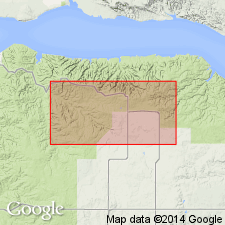
- Usage in publication:
-
- Sherven Formation
- Modifications:
-
- Named
- Dominant lithology:
-
- Breccia
- Sandstone
- AAPG geologic province:
-
- Williston basin
Summary:
Named as the uppermost subsurface formation (of 8) of Interlake Group. Type section is the interval between 12,028 ft and 12,058 ft--or 30 ft--in the Prosper Hunt 27-1 Sherven well in NWSE sec 27, T153N, R95W, McKenzie Co, ND in the Williston basin. Overlies the Missouri Breaks Formation (new) of the Interlake; lower contact of Sherven is sharp. Underlies Ashern Formation of Elm Point Group; upper contact is an unconformity. Consists of collapse breccia sequences, lithoclast sandstone, and solution zones in which multiple generations of vadose dripstone and dolomite cement are pervasive. Collapse breccia zones are generally of lime mudstone. Carbonates of Sherven represent fluvio-lacustrine environment that was followed by subaerial weathering and extensive subaerial karsting. Silurian age. History of nomenclature chart. Assigned to the upper part of the "upper Interlake beds" by some earlier workers.
Source: GNU records (USGS DDS-6; Denver GNULEX).
For more information, please contact Nancy Stamm, Geologic Names Committee Secretary.
Asterisk (*) indicates published by U.S. Geological Survey authors.
"No current usage" (†) implies that a name has been abandoned or has fallen into disuse. Former usage and, if known, replacement name given in parentheses ( ).
Slash (/) indicates name conflicts with nomenclatural guidelines (CSN, 1933; ACSN, 1961, 1970; NACSN, 1983, 2005, 2021). May be explained within brackets ([ ]).

